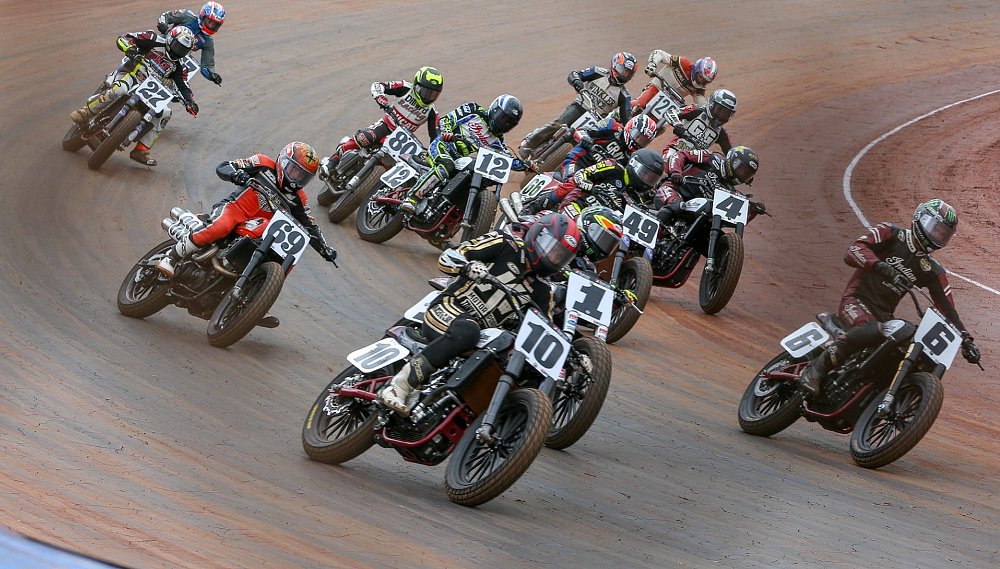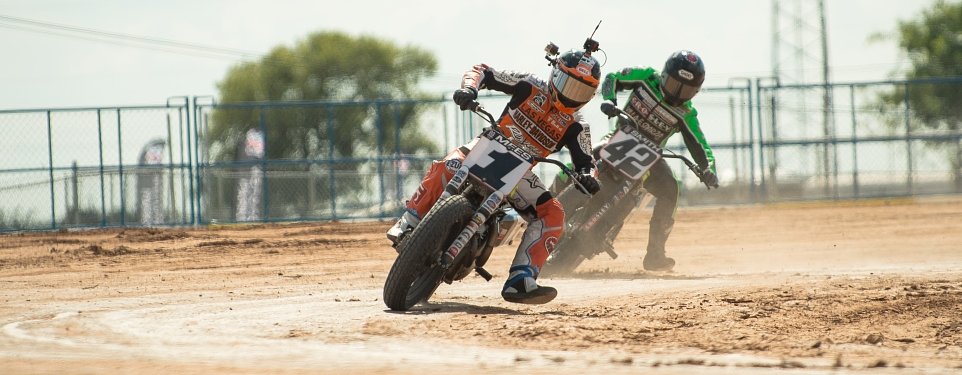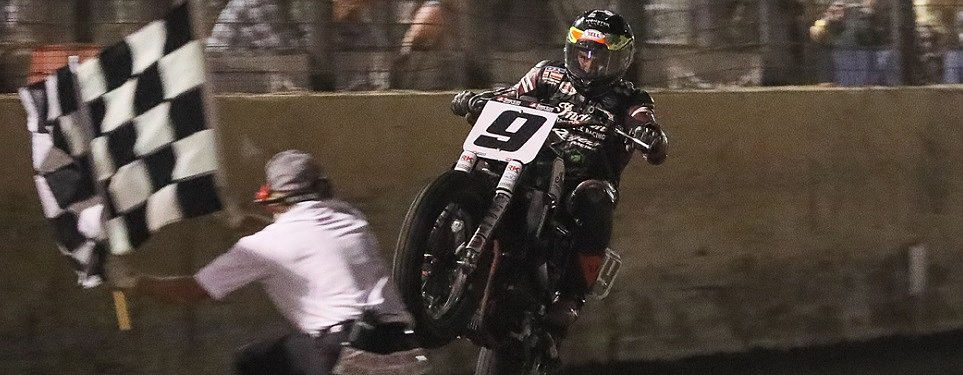After two years in which the Indian FTR750 took almost every podium position in the American Flat Track Twins Class, few were surprised when the series announced rules changes in October that were intended to help other brands compete.
Those changes include:
- Changing the spec fuel to Sunoco GTX-260 which is unleaded, and has a lower octane rating
- Significantly freeing up the rules related to motors which began life as production, street-legal motors
- Allowing production-based racers to hog out 38 mm throttle bodies to a maximum of 40 mm
A month or so after those changes were announced, Indian issued a statement say that while the company had no real beef with those first two points, “We take serious issue with the third rule change — allowing production engines to increase from 38 mm throttle bodies to 40 mm.”
The letter continued, "This rule excludes Indian Motorcycle Racing, because the Scout FTR750 is not a street-legal production motorcycle. Not only does the rule singularly handicap Indian Motorcycle, it represents a significant impairment of our ability to compete on an equal level with every other team in the paddock, specifically on mile tracks."
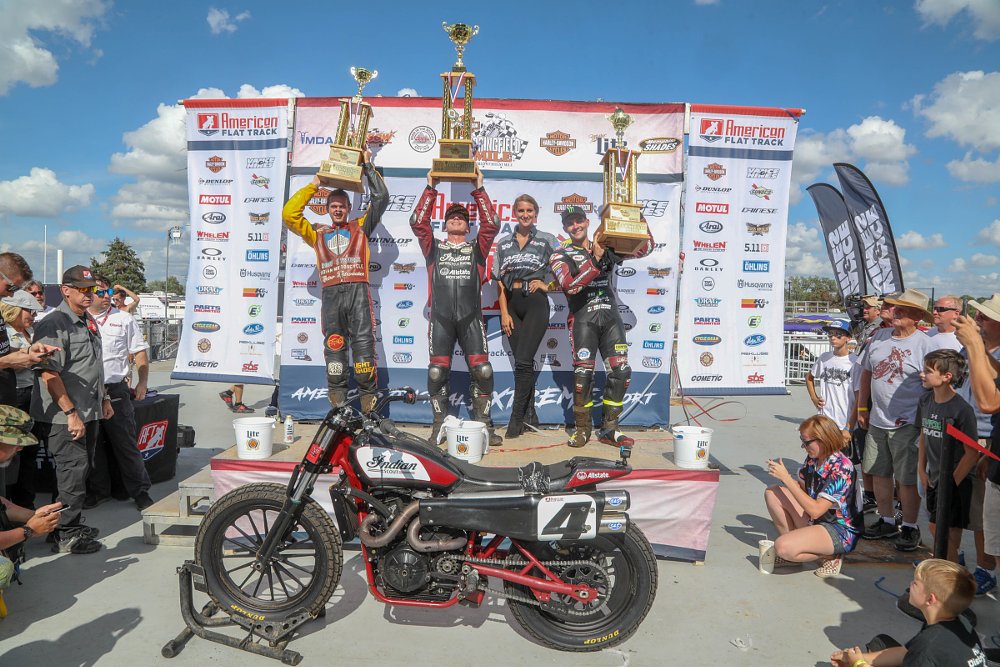
Fueling controversy? No
There’s a lot to unpack in the rule changes and Indian’s reaction. I spoke to AFT boss Michael Lock about the fuel change, and he described it as pretty much a no-brainer for a sport trying to attract a younger audience, update its image, and present itself as technologically up to date.
Indian admits that a change to the spec fuel affects everyone the same way; they went on to accept a lower power output as a result. On paper, a lower octane ratio will limit maximum compression ratios and reduce peak power. That’s on paper. In the real world of flat-track racing, where traction is limited and more power doesn't necessarily mean more speed, I’m not convinced that unleaded fuel will make much difference.
Bryan Smith told me that his Crosly/Howerton team was familiar with the new fuel because Ricky Howerton has used it in some very high performance auto engines. In fact, the high-lead-content Sunoco Supreme that AFT used to use as a spec fuel was so corrosive that Howerton "pickled" race motors by running them for a few minutes on GTX-260 fuel after each race. Smith said they’d dyno-tested motors on both fuels and that he didn’t expect that change to be significant.
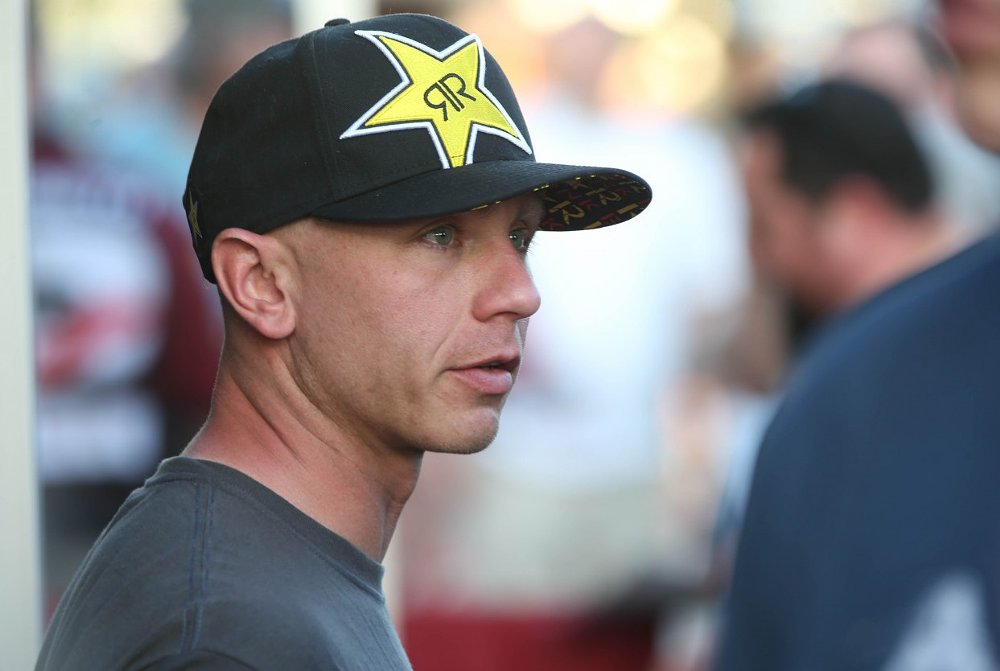
A return to good ol' hot roddin’? Yes
Although one line of the new rules reduces the maximum displacement of production-based motors from 999 cc to 900 cc, the net effect of the new rules is that builders are much, much freer to engage in old-fashioned hot rodding. As in, pretty much anything but the engine cases is now unrestricted. If it rotates or reciprocates, you can modify or change it at will. Teams can petition to run custom heads. And — this is a biggie — teams running production motors that were homologated at less than 750 cc are now free to bore and/or stroke ’em up to 900 cc.
The truth is that the teams running modern parallel twins, like Kawasaki 650 or Yamaha MT-07 motors, probably can’t increase displacement very much. There’s not enough meat between the cylinders to bore them out very far, and those motors are packaged so tightly that I am sure they’re also hard to stroke.
Smith told me that when he raced his Kawasaki, they often detuned it, to make it hook up, anyway. The series’ Dunlop DT3 spec tire is, by design, a rate-limiting factor. That said, I am not alone in thinking that Harley-Davidson’s star-crossed factory effort — with the Street 750-derived XG750R motor — will benefit from the ability to bump displacement, and I frankly hope they can bore and stroke it to 900.
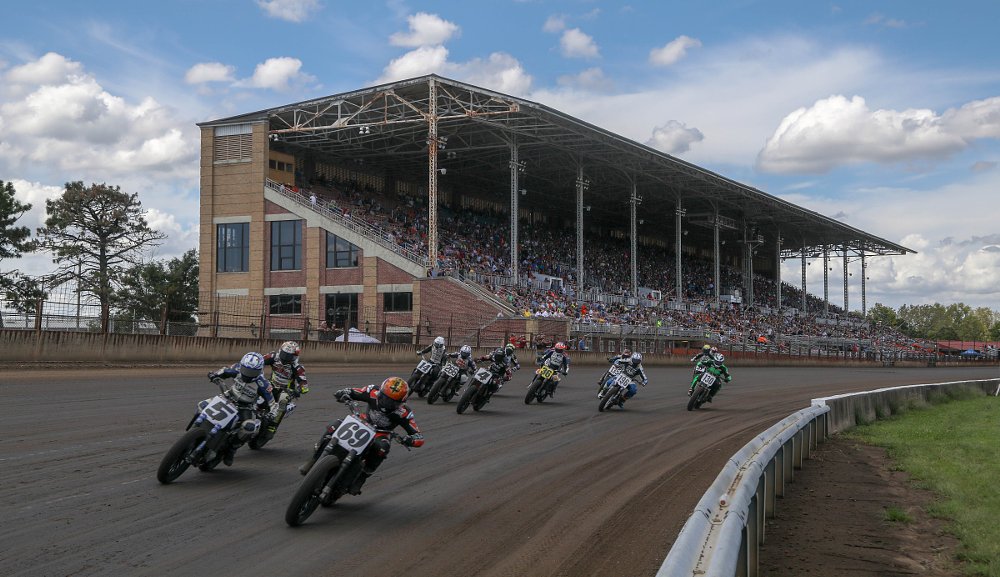
Indian: "Give them two millimeters and they’ll take the miles"
Indian's real complaint is the new rule about throttle body size for production engines (not including the race-only FTR750). Indian's statement above about this "significant impairment of our ability to compete on an equal level with every other team in the paddock, specifically on mile tracks," is a little misleading. Production-based engines can’t change to larger throttle bodies. They must use the ones they were homologated with. However, tuners can now modify them, opening 38 mm throttle bodies by 2 mm.
I spoke to Gary Gray, who (along with larger brand duties) manages the Indian factory racing effort for Polaris.
“In our sport,” he admitted, “power isn’t everything and it doesn’t help you on every track.” He acknowledged that some larger-displacement production-based motors had always been allowed to run larger throttle bodies, and hadn't gained any competitive advantage.
But Gray told me that, based on Polaris’ research, a modified throttle body could flow 20 percent more — giving Kawasaki and Yamaha teams a significant advantage, particularly on clay miles like Springfield. At the end of our call, he admitted that “AFT didn’t, to their credit, try to slow us down.” He just wished they hadn’t done so much to speed up his rivals.
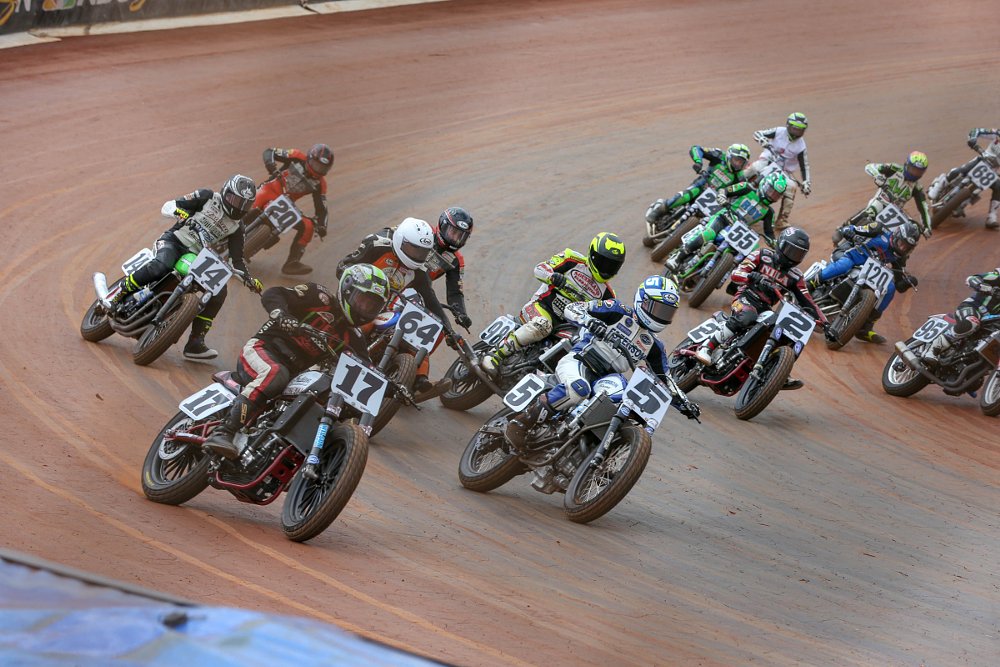
They call it flat track but the playing field hasn’t always been level
Gary Gray’s comment about AFT not penalizing Indian, but rather trying to achieve parity by reducing restrictions on everyone else, was a reference to the elephant in the room, which is flat track’s history of first favoring a manufacturer to encourage them to enter the series, then imposing specific restrictions on them if they get too successful.
Back in the 1980s, the Grand National Championship welcomed Honda as a new factory flat-track team. But when the RS750 proved dominant over Harley-Davidson’s XR-750, AMA Pro Racing restricted the Hondas (in response to Harley’s intense lobbying). The AMA’s heavy-handed approach drove Honda out of flat track, and ushered in an era of uninterrupted Harley dominance that was not good for the GNC. It wasn’t even good for Harley.
All that happened long before Michael Lock — the current boss of American Flat Track — had anything to do with the sport. But I know Lock’s acutely aware of that history, because it came up in a long, freewheeling conversation that was prompted by Indian’s open letter.
Lock told me that the AFT Competition Department, under Chris Carr and David McGrath, meet with an advisory group drawn from the AFT paddock (including for example, Bill Werner, Sammy Halbert, Jeffrey Carver, and Mike Hacker) over the course of the season.
“Proposals come into AFT from the group, and proposals from AFT are presented to the group,” Lock said, explaining that before the end of the season, AFT presents the advisory group with a "red lined" version of the current rule book, indicating proposed changes for the following season. I’m not sure how this squares with the implication in Indian’s letter, and Gary Gray’s statement to me, that Indian had no inkling of the changes until they were presented as faits accompli in October. (Riders who have been members of past advisory groups have told me that proceedings are supposed to be confidential.)
Vis-à-vis the throttle-body rule that has Indian on the war path, Lock pointed out that the streetbike-based throttle bodies used by all the non-Indian teams close with a butterfly, while Indian’s FTR uses a guillotine-style throttle.
“We were strongly advised by the advisory group,” he said, “that we were not comparing apples to apples. If competitors were going to use the standard throttle bodies with a butterfly then a two mm increase would allow... the fairest and broadest competition.” That's because the butterfly creates some restriction, even when fully open.
“Ultimately as a sanctioning body, our job is not to intervene in competition,” Lock told me. “It’s to lay out a landscape where great competition can happen. Sometimes that involves changing rules.”
Lock said Indian "altered the nature of pro flat track racing almost overnight" by introducing a purpose-built, turn-key race bike that was competitive right out of the box and could be bought by anyone for $50,000.
“You have to take your hat off to Indian, for producing a wonderful bike,” Lock admitted. “The sport’s massively benefitted from the arrival of Polaris... Our job is not to rap their knuckles for being successful... We’re trying to create parity by leveling-up everyone else.”
Lock told me that AFT’s long-term strategy — for at least as long as he’s been the boss, which is to say, for longer than Polaris has been involved — is that flat track should be a sport for production motorcycles. Looking back, few paddock insiders now think that letting the Grand National Championship devolve into a Harley-Davidson XR750 spec class in the 1990s was a good management decision.
“No one, least of all Indian,” Lock said, “knew the FTR was going to be this successful. And no one knew they’d sell 50 of them and weave it so heavily into the fabric of the sport. My aim, and the aim of the sanctioning body, is to still migrate the sport to production-based machines, but we [won’t] turn around and say, ‘Guess what, that bike’s now illegal.’”
If Lock can’t ban it, and won’t pass rules to slow it down, his only hope is to loosen the rules for production-based motorcycles. Over the next few years, Lock’s hoping to strengthen Kawasaki’s and Yamaha’s commitment, and he hinted strongly that a more official KTM presence is on the way. Flat track would benefit greatly if Harley-Davidson’s XG750R became a regular podium visitor (or at least, challenger). None of those things will happen if OEMs think that the only bike capable of winning races is an Indian FTR750. Even Polaris admits its current dominance “does not benefit the sport.”
Next season will see Bryan Smith on Kawasakis prepared in Ricky Howerton’s superb Indianapolis shop. Smith told me that last year as an Indian factory rider, he often would have preferred his Kawasaki. “It’s not as if Indian was out there going faster than we’d ever gone,” he reminded me. “We weren’t setting a bunch of track records.”
Smith told me that Indian’s complaints over the two mm allowance for throttle body modification was specifically about him and those Howerton Kawasakis. “Gary Gray told me, ‘We shouldn’t even run the Miles. You’re going to win them all anyway,’” Smith laughed.
That may or may not turn out to be true. Estenson Racing will field a terrific team of Jake Johnson, J.D. Beach, and up-and-comer Kolby Carlile on bikes powered by Yamaha’s twins. I imagine Indian sees a threat from that quarter, too.
Indian’s open letter concluded, "It is critical to us that American Flat Track fans understand how these changes exclusively impair Indian Motorcycle Racing. Despite these changes, we will attack 2019 with the same competitive focus and determination that resulted in back-to-back championships over the past two years."
I wouldn’t bet against Jared Mees and his factory Indian over the course of the 2019 season, but I believe that even without these rule changes, we would’ve seen a little more brand diversity on AFT podiums. If these changes make Kawasaki and Yamaha a little more competitive — and especially if Harley-Davidson’s team can challenge for wins — that’ll be good news for the sport of flat track generally.
Hopefully, Indian’s open letter will not have the effect of making ordinary fans feel that organizers have a thumb on the scales when it comes to technical rules. An inter-brand rivalry will be good for everyone, even Indian. So now that you’ve read this story, forget that damned letter.









